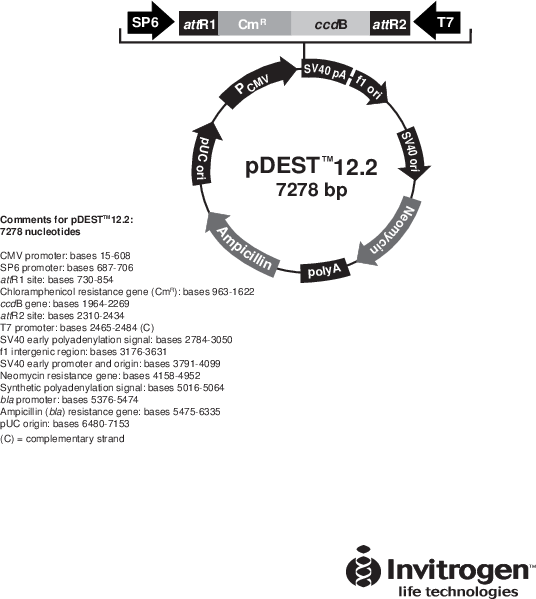alpha 0-CFP in pdest12.2
(Plasmid
#36312)
-
Depositing Lab
-
Sequence Information
Full plasmid sequence is not available for this item.
Ordering
| Item | Catalog # | Description | Quantity | Price (USD) | |
|---|---|---|---|---|---|
| Plasmid | 36312 | Standard format: Plasmid sent in bacteria as agar stab | 1 | $89 | |
Backbone
-
Vector backbonepd12.2
-
Backbone manufacturerInvitrogen
- Backbone size w/o insert (bp) 7261
- Total vector size (bp) 9052
-
Vector typeMammalian Expression
-
Selectable markersNeomycin (select with G418)
Growth in Bacteria
-
Bacterial Resistance(s)Ampicillin, 100 μg/mL
-
Growth Temperature37°C
-
Growth Strain(s)DH5alpha
-
Copy numberHigh Copy
Gene/Insert
-
Gene/Insert nameG protein alpha 0
-
SpeciesR. norvegicus (rat)
-
Insert Size (bp)1065
-
MutationIntroduced KpnI and SpeI sites between 92nd and 93rd amino acids of alpha 0
-
GenBank IDNM_017327.1
-
Entrez GeneGnao1 (a.k.a. Gnao, Hg1g, RATBPGTPC)
- Promoter CMV
-
Tag
/ Fusion Protein
- CFP
Cloning Information
- Cloning method Gateway Cloning
- 5′ sequencing primer SP6 primer
- 3′ sequencing primer T7 primer
- (Common Sequencing Primers)
Terms and Licenses
-
Academic/Nonprofit Terms
-
Industry Terms
- Not Available to Industry
Trademarks:
- Zeocin® is an InvivoGen trademark.
Depositor Comments
The CFP was introduced between 92nd and 93rd amino acid of alpha-0
These plasmids were created by your colleagues. Please acknowledge the Principal Investigator, cite the article in which the plasmids were described, and include Addgene in the Materials and Methods of your future publications.
-
For your Materials & Methods section:
alpha 0-CFP in pdest12.2 was a gift from Narasimhan Gautam (Addgene plasmid # 36312 ; http://n2t.net/addgene:36312 ; RRID:Addgene_36312) -
For your References section:
A fluorescence resonance energy transfer-based sensor indicates that receptor access to a G protein is unrestricted in a living mammalian cell. Azpiazu I, Gautam N. J Biol Chem. 2004 Jun 25;279(26):27709-18. Epub 2004 Apr 12. 10.1074/jbc.M403712200 PubMed 15078878
Map uploaded by the depositor.






